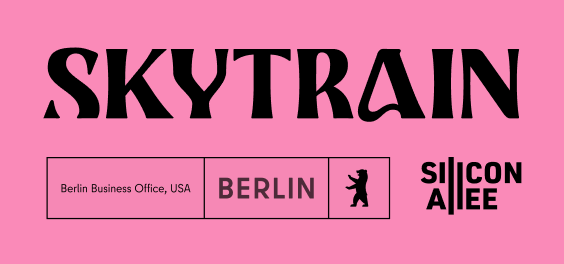This article is published as part of Skytrain – a transatlantic investor community bridging the gap between investors and VC funds in the US and Berlin. Join the network or learn more about what we do here.
On July 5, 2022, we met with Niklas Jansen, co-founder of Blinkist and – since 2018 – angel investor in primarily pre-seed and seed companies. Over the last year he’s focused heavily on bringing together an international investor syndicate here in Berlin.
In the last 6 months (at the time of writing) Niklas and his syndicate have invested in 6 companies with around €250,000 – €500,000 per deal. Some of whom are already raising follow on rounds – which, given the current market environment, is pretty amazing stuff!
We picked his brain on all things syndicate…
(If listening is more your thing, we have also published this interview as a podcast on Spotify)
What are syndicates and SPVs?
A Syndicate is a group of investors that pool their funds via an SPV in order to make an investment. The Syndicate Lead is the person responsible for organizing the syndicate.
An SPV is a “Special Purpose Vehicle”; a legal entity set up for a specific purpose. In this case, it’s used to pool funds from a syndicate of multiple investors in order to purchase shares in a startup. You can think of it as a fund set up to do a single deal.
Syndicates vs typical VC funds – what are the advantages?
- As a syndicate you have much more access to deals because you can invest larger amounts than you can as a sole investor.
- In the same way, it’s also a great way of democratizing venture capital – where people who wouldn’t normally be able to make VC deals can invest in startups. Minimum investment per individual can be as low as $5,000 or sometimes lower.
- And especially with a more formal arrangement, an SPV, as opposed to a ‘community’ of investors making investment decisions on a case-by-case basis – you have the benefit of putting all investors into one line on a startups’ cap table. That makes notary appointments in Germany much easier to organize!
- It makes economic sense too, because just like a VC, the syndicate leader can take a carry of (typically) 20%.
- Another big advantage is the network. As a member of a syndicate (or founder with a syndicate on the cap table), you’re tapping into the combined network of 10-20 investors. For the founders especially, this can be a major advantage when it comes to things like recruitment or getting strategic advice.

How to set up a syndicate
- First of all, if you don’t have it already, reach out to your network and create a list of potential investors. People you know would be interested in funding a startup but don’t have the time or the financial means to go it alone.
- After that, the next thing you need to do is find a deal that excites you.
- Then, write out a memo with as much information about the deal as you can find and reach out to your list of potential investors (make sure to put a time limit on the round – 7 days is a good average).
Another thing you need to know is that it will require some organizing. You should definitely have a ball-park figure in mind when you approach both the founders and your investment syndicate.
When it comes to setting up the SPV for deals in Germany here are some things you need to know.
The SPV can take the form of a limited partnership, limited liability company or corporation. Most German SPVs are registered as a limited liability company (GmbH), likely because it’s the most flexible and easiest to form. Plus, foreign nationals can own 100% of the shares.
The procedure for setting up an SPV is fairly simple (by German standards). Even so, we recommend getting legal advice from a professional lawyer.
Here’s an outline:
- The procedure starts by signing an agency agreement, which is used to offer a schedule for the project. Following that, the investors should draft the articles of associations and to choose a trading name for the SPV. This would all be completed at the Chamber of Industry and Commerce (IHK).
- All the documents you need for the SPV have to be notarized at a public notary in Germany.
- In the final step, the investors will have to appoint two directors and to register the company with the local Trade Register (Handelsregister).
There are also several software providers who can do all the heavy legal lifting and help set up syndicates for you. Stay tuned for our review of those companies soon.
How to pitch your syndicate to the founders
When it comes to pitching the founders you want to invest in, transparency is key. Make sure the founders know exactly what a syndicate is and how it works.
When you already have a good idea of which investors will be involved in the deal. Choose three or four key people and let the founders know who they are, why they’re a good fit for the deal, and what they’re bringing to the table.
For established Angels – what are the advantages of joining a syndicate?
- Joining a syndicate can be a great way of sourcing new deals. Sourcing new deals for investment can be a full-time job, for those who want to invest capital in startups but don’t want to spend all their time seeking out deals, a syndicate is perfect.
- Also, if a syndicate buys in on a deal it could be that the only way for an investor to get in on the action is to join the syndicate. So that’s definitely an advantage.
- A lot of VC deals start upwards of €20-25,000 and a syndicate can be a way to get in on those deals without committing the full investment amount – that’s great for smaller investors who won’t necessarily have the capital.
Is there a certain kind of startup (domain, stage, investor mix) that is better suited to syndicates?
Due to the deal-by-deal nature of a syndicate, attention is going to be very much focused on the deal itself. But there are a few key signs to look out for:
- Startups with a very strong co-founding team. These could be serial entrepreneurs with successful businesses already under their belts. Any kind of proof that they can build something amazing.
- Do they already have traction? It could be that they have an offer, brand or business model that stands out very clearly in the marketplace.
- If a startup already has a strong lead investor, it’s a very good indicator that the founders’ idea has a solid chance of becoming a reality.
The biggest challenges for a syndicate
Probably the biggest challenge for a syndicate is the deal-by-deal nature of it. That means, for every deal you make, you have to raise funds for it.
As the syndicate leader, it’s not simply a matter of looking for the deals that you believe in – you need to filter every opportunity through a lens of “will this deal work for a syndicate?”.
The other thing is of course, it’s a lot of communication and organization to put syndicate deals together. There’s a lot of emailing back and forth and phone calls; much more than if you’re operating as a typical VC fund. You also need to get approval from co-investors before you make any major decisions.
Then, of course, you have to go through the motions of creating the SPV for every deal.
What happens at an exit event for the investors in a syndicate?
You need to think about it like this. A syndicate acts more like an angel investor than a VC, so although you may have pro-rata rights, it’s not a prerequisite of the deal. That means it’s definitely possible for a syndicate to sell earlier than most VCs in a series B or C stage if there was a strategic advantage to doing so.
In theory an investor could even sell their share in the syndicate to another member if they want out for whatever reason and the other member wants to double down.
Are there preferred terms for syndicates?
The terms would depend a lot on the individual syndicate and the deal itself. At a seed or pre seed stage there’s a chance that you get first commitment so you could end up getting the best terms – at a lower pre-money valuation – than other investors.
If your syndicate is investing in series A or higher deals, there’s not much chance of getting overly preferential terms. But most often the syndicate gets the same terms as other investors in the round.
What about secondary sales or follow-on rounds?
Follow-on rounds can definitely happen. If you have pro-rata rights, you can easily create another syndicate for the follow-on round. A syndicate is very flexible. In theory investors in the syndicate can also sell out early to co-investors or new parties but this doesn’t happen often.
Are there any potential complications for US investors investing in Germany?
The good news is that it’s very feasible for US-domiciled investors to join an international syndicate and take advantage of the vast opportunities here in Germany.
The bad news is that things could get a little complicated, depending on where your SPV is domiciled.
When the fund is set up in the US, it’s going to be subject to US taxation and securities laws. With that setup you could deploy capital in Germany – but the reporting costs would probably push the deal into the “not really worth it” category.
That being said, there are new tools emerging that aim to simplify the process of setting up SPVs and syndicates (including US-domiciled LPs) in the EU. Companies like Vauban, Odin, and Bunch are streamlining the process by handling the complex legal and regulatory aspects. We will be publishing a full review on these software platforms soon. Stay tuned.
So that just about covers it. In summary, syndicates and SPVs are a very simple, low-barrier-of-entry way for US-based investors to put their money to work in the growing German startup ecosystem. They’re not without complications but as more and more people catch on, we’re sure they’re going to become even more accessible in the months and years to come.
Article written by Andrew Wilkinson
Join the conversation on our twitter thread

Dieses Vorhaben wurde als Teil der Reaktion der Union auf die Covid-19-Pandemie finanziert.

